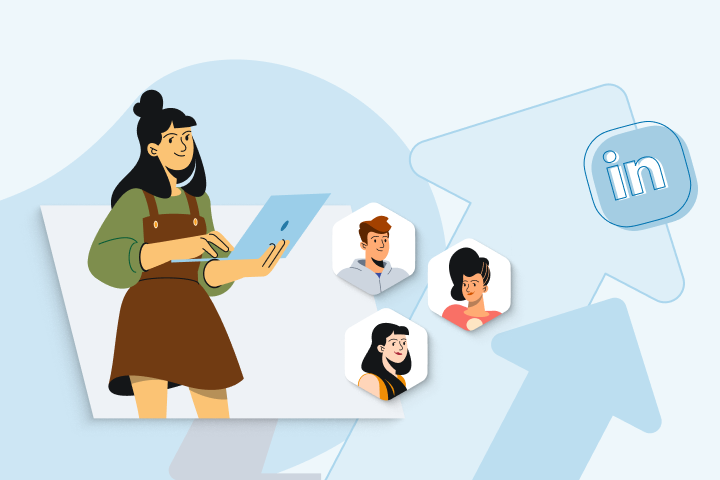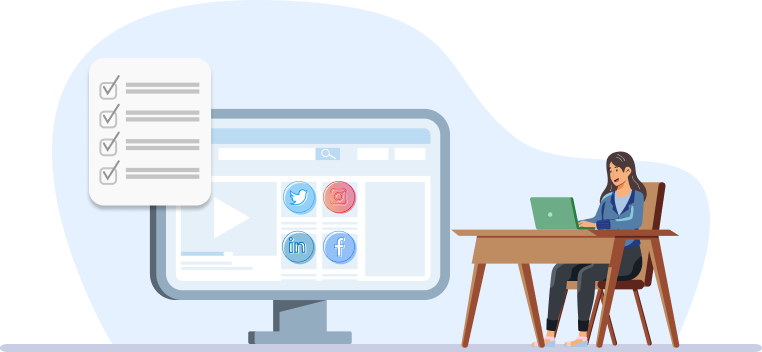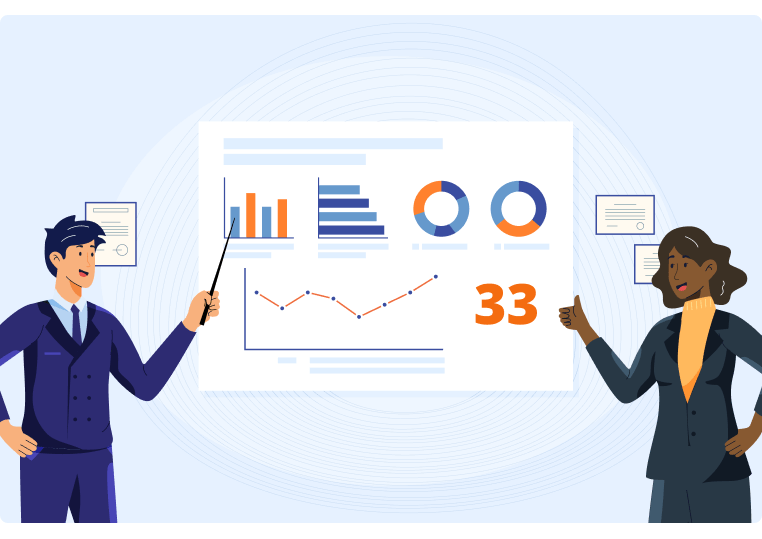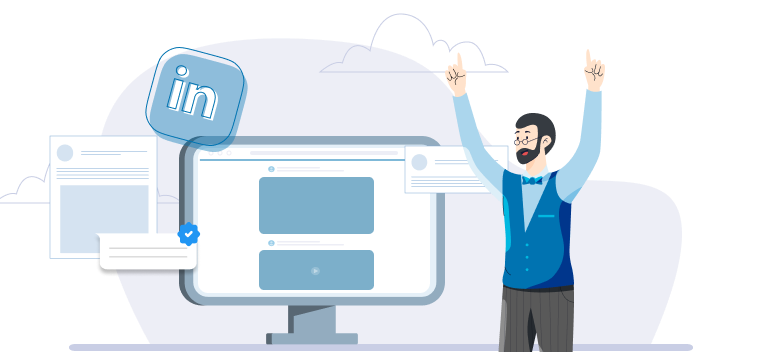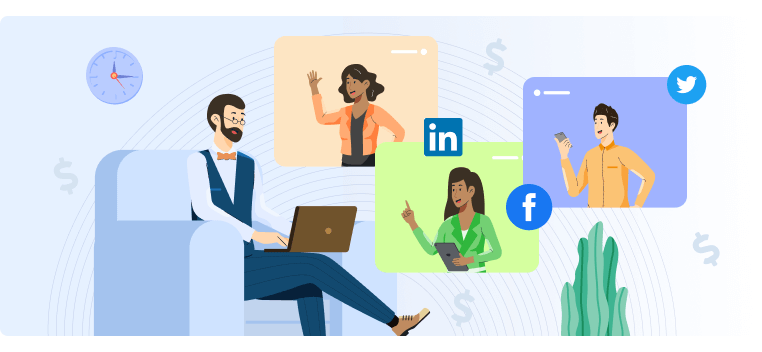LinkedIn Social Selling: What It Is and How to Use It
LinkedIn was created so employers could connect with potential employees, however, LinkedIn has also become a powerful sales tool. Nowadays, sales reps are using social media platforms, like LinkedIn, to reach a broader audience of potential buyers.
Social selling is a strategy used by sales reps to leverage social media to generate new leads and reach sales goals. In fact, salespeople who engage in social selling are 51% more likely to reach quota.
To get the best results from social selling, you can pair it with an employee advocacy program — employee advocacy and social selling go hand-in-hand. Marketing and sales leaders provide their sales team with content to share on social media that is on-brand and aligns with the overall company messaging.
This empowers salespeople to engage on social media and establish themselves as thought leaders and trusted sources of information. They’ll be able to connect with people in your target audience, provide value by sharing relevant content, and build a relationship with potential customers.
What is LinkedIn Social Selling?
LinkedIn social selling refers to the process of using LinkedIn to grow your social network, engage with leads and prospects by answering questions and providing value, and build trusting relationships with potential customers to drive sales.
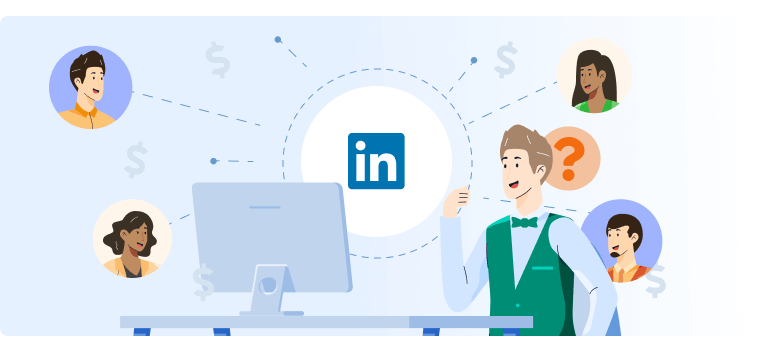
With a LinkedIn social selling strategy, your sales team can leverage their social networks to improve sales prospecting, build trust with ideal clients, and close more deals.
How to Optimize Your LinkedIn Profile for Social Selling
The goal of your LinkedIn profile is to attract your ideal clients, so you want to make sure your profile appeals to potential prospects and what they’re looking for. How will you help them? Dive into the details as you create your LinkedIn profile and start establishing your personal brand.
Here are a few ways sales leaders and salespeople can optimize their LinkedIn profiles to connect with potential customers.
1. LinkedIn Profile Picture
Did you know that having a profile picture makes your LinkedIn profile 14 times more likely to be viewed? Your LinkedIn profile picture is a prospect’s first introduction to you and it’s an important part of your LinkedIn presence.
When selecting a profile picture, use a professional headshot that’s well-lit, distraction-free, and accurately represents who you are. The ideal pixel size for your LinkedIn profile picture is 400 (w) x 400 (h) pixels, with a maximum pixel size of 7680 (w) x 4320 (h).
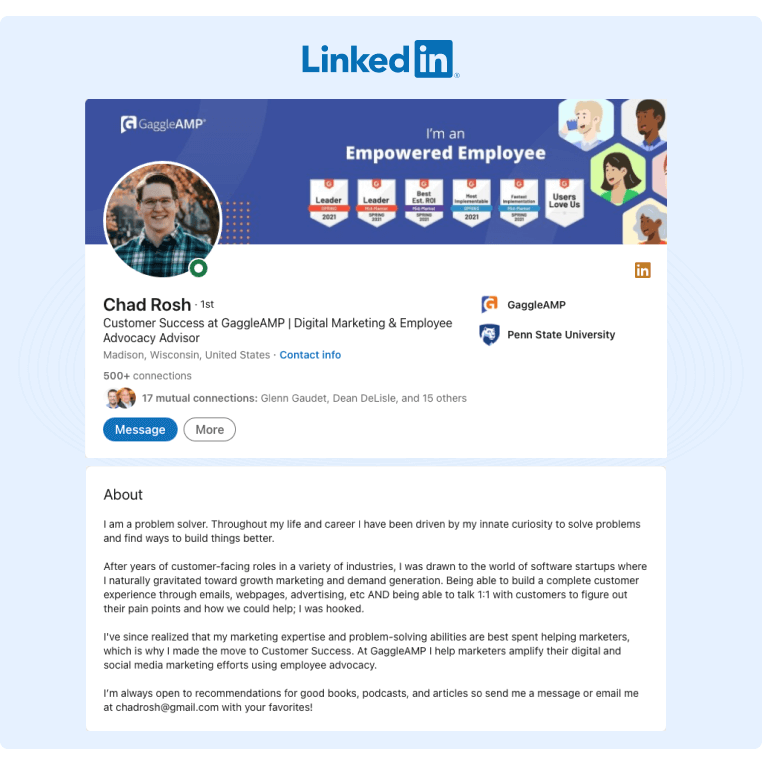
You are the focal point of the profile picture, and your face should be centered in the frame. A welcoming smile is a great way to build trust with people who come across your professional profile.
2. LinkedIn Background Photo
The LinkedIn background photo is another element of your profile that you can customize for your ideal audience. Not only does it help you display your personal brand, but it can also be a conversation starter with potential clients. Plus, it only takes a few steps to upload a background photo to your profile.
LinkedIn Background Photo Ideas
If you’re not sure what type of background photo you should add, here are a few ideas that will help your profile stand out. You can upload a photo that represents:
-
Your workspace.
-
Your product or service.
-
The people you serve.
-
The benefits you can provide to prospects.
-
The cause or mission at the core of your personal brand.
3. LinkedIn Headline
The LinkedIn headline is one of the most important aspects of your LinkedIn profile. This is where you want to include clear messaging about what you do and how you help potential customers.
Here’s an equation you can use to create your own LinkedIn headline:
[Your Job Title]: Helping [target audience] achieve [results]
Example LinkedIn Headlines
- Account Executive: Helping customer success managers delight their clients.
- SDR: Helping small businesses convert their leads to customers.
- Account Manager: Helping B2B businesses create an effective inbound marketing strategy.
4. LinkedIn Summary
Your summary is where you have the chance to describe yourself and the value you provide to your target audience in more detail. Your personal brand can shine through in your summary. Include keywords that your ideal client will be looking to show how much you know about them and their industry.
A good rule of thumb in the LinkedIn summary is the 3x3 method: Three paragraphs of three or fewer sentences with your keywords included and a clear CTA at the end.
5. LinkedIn Job Descriptions
List your prior positions and the timeframe of when you worked there. Go above and beyond while describing your role and include the outcomes you achieved. For example:
- Increased customer retention by 80%
- Increased sales page conversions by 200%
- Helped a B2B client streamline their sales processes to increase sales by 90%
Sharing these results demonstrates to prospects how you could help them. Plus, they might know mutual connections from some of your previous companies — this is another way to build trusting relationships on LinkedIn.
How to Sell on LinkedIn
Once your LinkedIn profile is optimized, it’s time to kick off your social selling strategy. The purpose of social selling is to create a relationship with potential clients — here’s how to connect with them on LinkedIn.
1. Search for Potential Clients
The LinkedIn search tool is incredibly powerful and one of the best ways to find new connections in your target audience. Once you’ve entered your main search keyword, you can filter results by the following categories:
- People
- Jobs
- Posts
- Groups
- Events
- Companies
- Schools
- Courses
- Services
If you’re interested in advanced searches, your sales team can invest in LinkedIn Sales Navigator. It connects to your CRM and provides advanced search features that help you search for ideal leads and companies. Plus, you’ll get customized lead recommendations that will make the prospecting process easier.
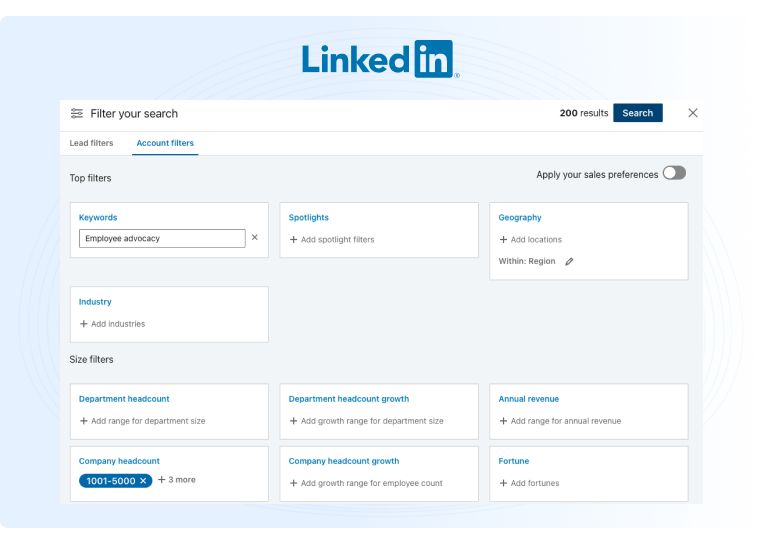
2. Join Groups That Are Relevant to Your Ideal Client
LinkedIn groups allow you to reach an even wider audience of potential customers. Join groups related to your industry, products, or services, and join any that might appeal to your ideal customer.
While you can be a fly on the wall and research prospects within the group, you’ll find much more success making connections when you engage with the group. Participate in conversations, leave meaningful comments, and share relevant content that group members could benefit from.
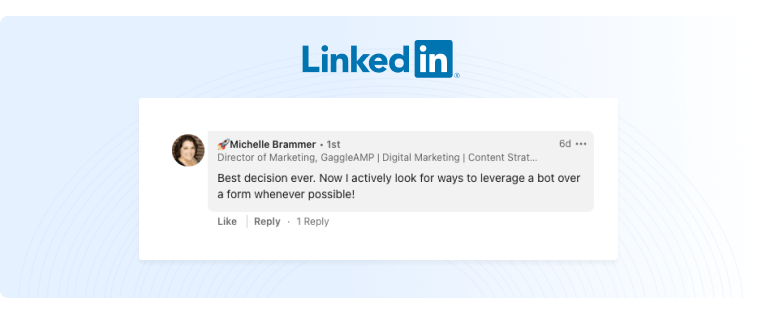
3. Publish Valuable Content
Did you know that 62% of B2B buyers respond to salespeople who connect with buyers by sharing relevant content and insights? Sales reps can achieve these results by sharing content that relates directly to potential buyers.
If you’re unsure about what to share, here are a few content ideas to support your social selling efforts:
- Timely industry news
- New research
- Case studies
- Customer testimonials
Create LinkedIn posts that highlight insights that speak to your ideal client and inspire conversations in the comments. Tag relevant people who might find your content interesting to get the conversation going. As more people share your content and interact with it, the greater the reach it will have, and the more likely it will reach your target audience.
Keep an eye on the comment section to see if any people who have commented might be a good fit for your product or service. Once you’ve started a conversation with them, you have a better chance of making a strong connection.
4. Send a Personalized Connection Request
How likely are you to respond to a random message from a stranger? The odds likely aren’t very high. When you send a connection request, personalize the message so it speaks directly to the client.
- Do you have a mutual connection?
- Are you both members of a LinkedIn group related to your industry?
- Did they interact with a piece of content you shared?
- Is there a particular aspect of their LinkedIn profile you connect with or relate to?
These are just a few questions you can ask yourself as you add personal touches to your LinkedIn connection requests.
5. Network and Make Connections
LinkedIn is a great starting point to find and build connections. After your personalized connection request is accepted, you can continue the conversation on LinkedIn and nurture the relationship.
Eventually, you’ll want to take the conversations offline to continue the sales process. When you feel the client is ready, you can set up a phone call or Zoom meeting to get a better idea of their needs. From there, you’ll be able to create a custom solution that addresses the challenges they’re facing.
Find Success with Social Selling on LinkedIn
Social selling is an incredibly useful sales tool that allows sales reps to create stronger connections with potential clients. With a social selling strategy, your sales team can identify leads that are a great fit for your product or service, resulting in more sales opportunities and closed deals. When paired with an employee advocacy program, you’ll find even more social selling success.





